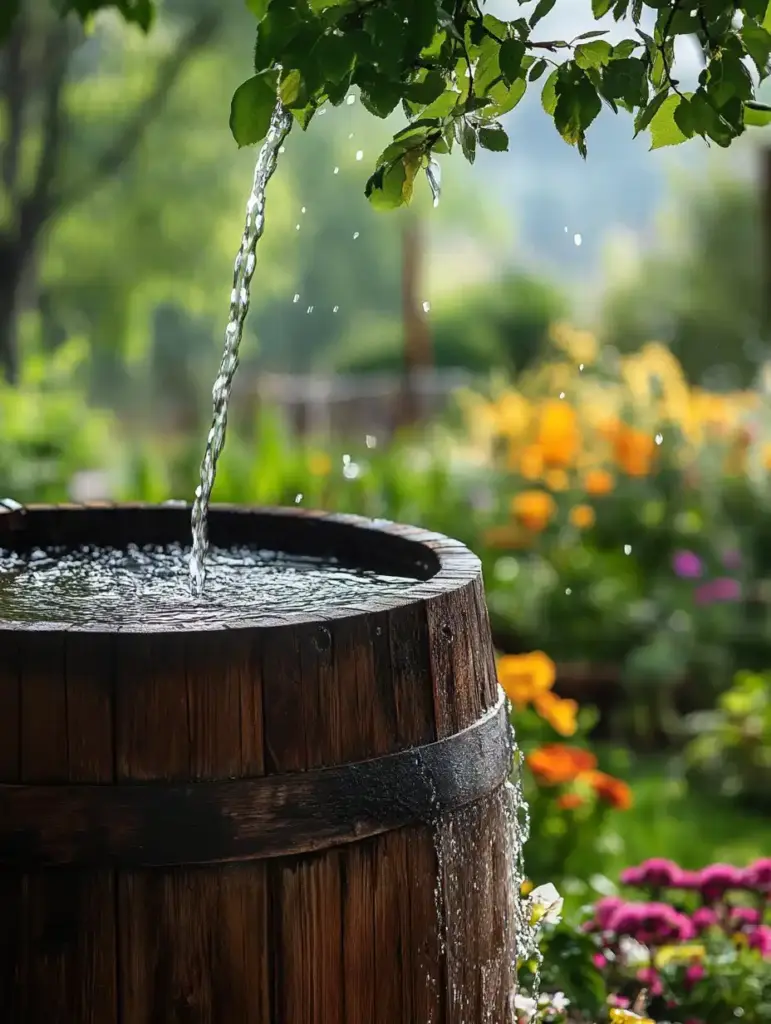If you’re dreaming of a yard that’s not only beautiful but also environmentally responsible, rainscaping might be exactly what you need. This forward-thinking approach to landscaping is quickly becoming a favorite among eco-conscious homeowners who want to enhance their outdoor space while actively protecting local ecosystems. With rainscaping, your yard becomes a solution—not a contributor—to water pollution.
Instead of allowing rainwater to rush off hard surfaces and into storm drains, rainscaping ideas like rain gardens, DIY rainwater collection systems, and permeable walkways help absorb, filter, and reuse that water directly on-site. By integrating these rainscaping techniques, you not only conserve water and support biodiversity, but also reduce runoff in style. If you’re just starting out, don’t miss our guide to affordable backyard renovation ideas for even more ways to align beauty with sustainability.
Table of Contents
💧 What Is Rainscaping?
At its core, rainscaping is a sustainable landscaping practice that manages rainwater runoff in a way that mimics nature. Instead of allowing rain to stream over non-porous surfaces—like rooftops, driveways, and sidewalks—it’s redirected into areas where it can soak into the soil, be filtered naturally, and nourish plants. This reduces pollution and helps replenish groundwater.
One of the most recognizable features in rainscaping designs is the rain garden—a shallow, planted basin designed to temporarily hold and filter runoff. But rainscaping is not limited to just one method. It’s a holistic approach that can include multiple elements working together to create a low-maintenance, water-wise landscape.
Unlike traditional landscaping, which often contributes to runoff and erosion, rainscaping turns rain into a resource rather than a problem. The goal is to slow the water down, spread it out, and soak it in—preventing it from becoming polluted stormwater that flows into rivers and oceans.
Rainscaping isn’t just a trend—it’s a practical and beautiful way to restore the natural water cycle in our own backyards.
⚠️ Why Rain Runoff Is a Problem
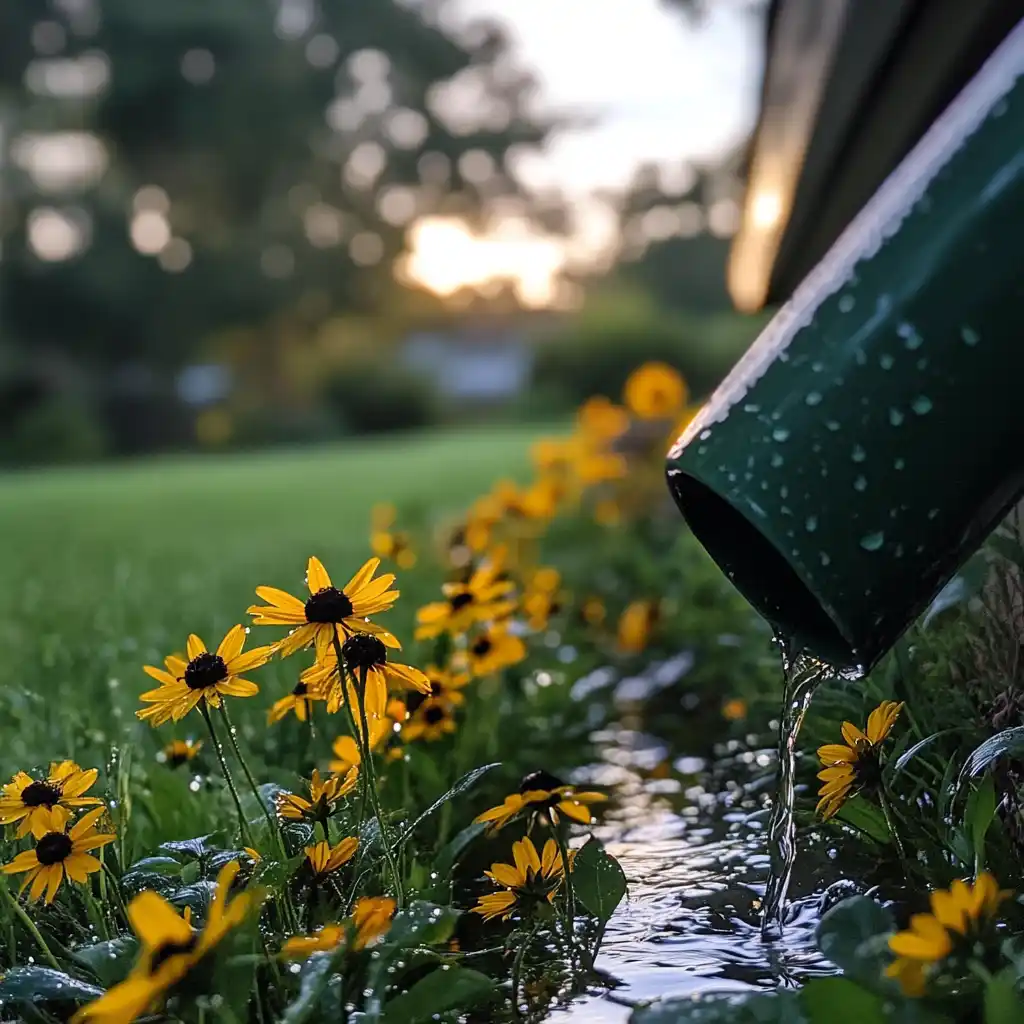
Rainfall may seem harmless, but when it hits hard surfaces like rooftops, roads, or patios, it quickly turns into runoff—a fast-moving stream that collects everything in its path. This includes motor oil, pesticides, fertilizers, pet waste, and even cleaning chemicals. All of it gets swept into storm drains and dumped—untreated—into our streams, rivers, and oceans.
According to the National Oceanic and Atmospheric Administration (NOAA), the U.S. experiences over 10 trillion gallons of polluted runoff each year. That staggering volume contributes significantly to water contamination, harming aquatic ecosystems, disrupting natural habitats, and even affecting drinking water quality.
What makes this problem more dangerous is that much of it is non-point source pollution, meaning it doesn’t come from a single identifiable origin. It’s diffuse, making it hard to track and regulate. And it’s largely fueled by urban development, which replaces natural, absorbent landscapes with impermeable surfaces like asphalt and concrete.
In fact, studies show that nearly 80% of ocean pollution originates from land-based sources—mostly carried by runoff. Without intervention, this silent threat continues to grow. But with solutions like rainscaping, we have a chance to reverse the damage—starting in our own front yards.
🌿 Rainscaping Ideas and Components
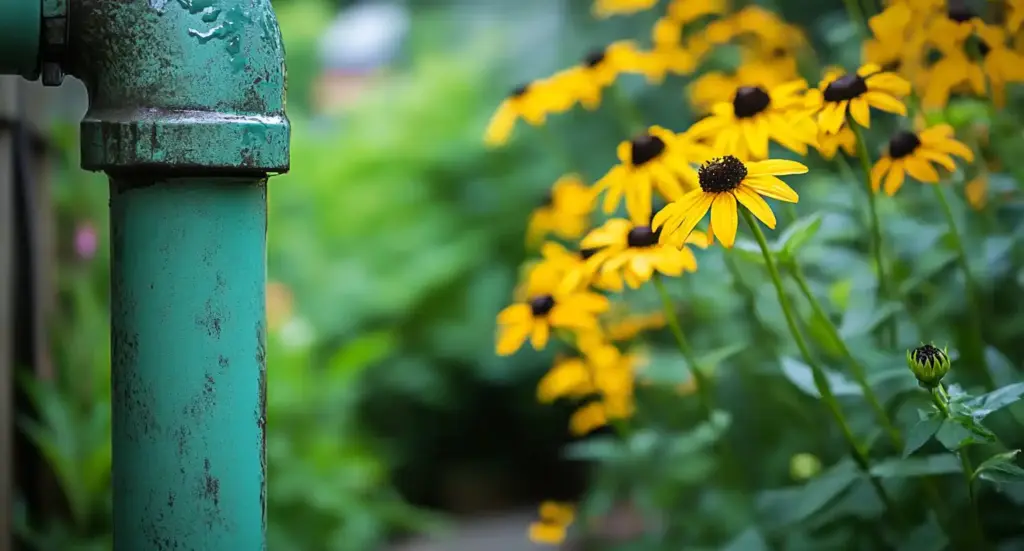
Designing a rainscape offers flexibility, creativity, and meaningful impact. Here are some of the most effective rainscaping ideas that combine form, function, and eco-friendly principles:
🌼 1. Create a Rain Garden
A rain garden is a shallow, bowl-shaped depression filled with native plants that thrive in wet and dry conditions. It’s designed to temporarily hold rainwater runoff from roofs, driveways, or patios, allowing it to slowly soak into the ground.
- Acts as a natural filtration system
- Reduces localized flooding
- Supports butterflies, bees, and birds with pollinator-friendly vegetation
Pro tip: Use deep-rooted native plants like switchgrass, coneflowers, or milkweed for the best results.
💧 2. Harvest Rainwater with Barrels
Installing a rain barrel at the base of a downspout allows you to collect rooftop runoff and reuse it later to water your garden.
- Saves on irrigation costs
- Reduces stormwater volume
- Great for drought-prone areas
Just be sure the water is only used for non-potable purposes (like watering plants).
🌧️ 3. Disconnect Downspouts
Redirect your home’s gutter downspouts so water flows into your lawn, a rain garden, or a barrel—not the storm drain.
- Low-cost, high-impact upgrade
- Slows water velocity
- Reduces demand on municipal drainage systems
🪨 4. Build Permeable Walkways
Traditional concrete paths repel water. Instead, try materials that allow it to filter through the surface, such as:
- Pea gravel
- Mulch
- Permeable pavers
These not only minimize runoff but also give your yard a rustic, natural look.
🌾 5. Design a Bioswale
A bioswale is a landscaped channel (usually curved or linear) that captures and filters larger amounts of runoff. Think of it as a high-capacity rain garden that guides water slowly across your property.
- Ideal for sloped or larger properties
- Filters pollutants through layers of soil and vegetation
- Adds aesthetic and structural value to the landscape
✅ Environmental Benefits of Rainscaping
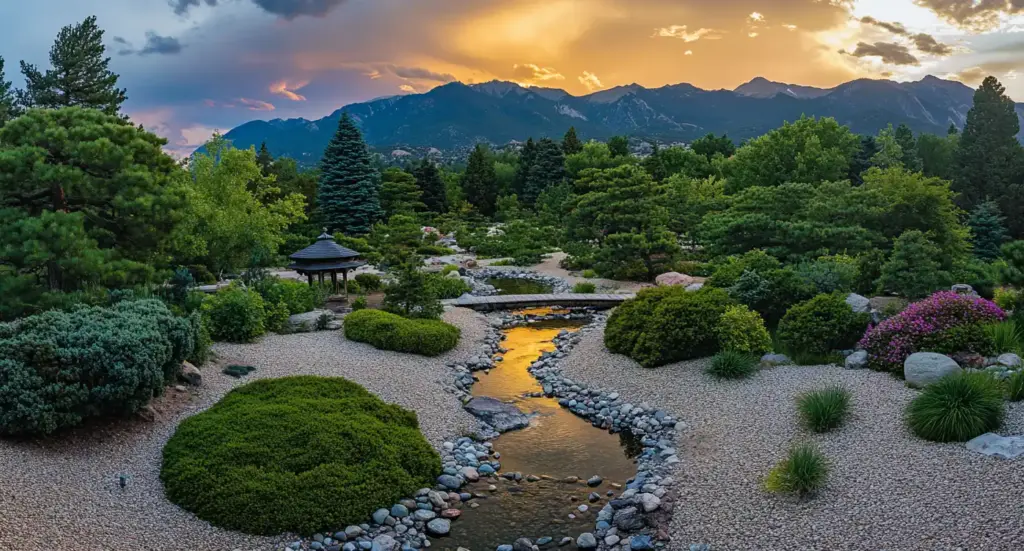
Investing in rainscaping does more than just beautify your yard—it delivers meaningful, measurable benefits to the environment, your community, and even your wallet.
🌍 1. Reduces Water Pollution
By capturing rain before it becomes runoff, rainscaping prevents pollutants from reaching local waterways. This helps protect ecosystems and keeps streams, rivers, and oceans cleaner for everyone.
🌱 2. Improves Soil Health
Healthy soils are critical for plant growth and carbon sequestration. Rainscaping encourages water infiltration, which promotes beneficial microbial activity and reduces erosion.
🐝 3. Increases Biodiversity
Rain gardens and bioswales often become mini ecosystems, attracting pollinators like bees and butterflies, as well as birds and beneficial insects. This supports local biodiversity and helps counter habitat loss due to urban development.
🏡 4. Adds Property Value
A well-designed rainscape can enhance your home’s curb appeal. It also demonstrates eco-conscious living—an increasingly attractive feature for modern homebuyers.
💰 5. Cuts Water Bills
By using rainwater to irrigate your garden and reducing reliance on municipal water, you can lower your monthly utility costs—especially during the growing season.
❓ Frequently Asked Questions About Rainscaping
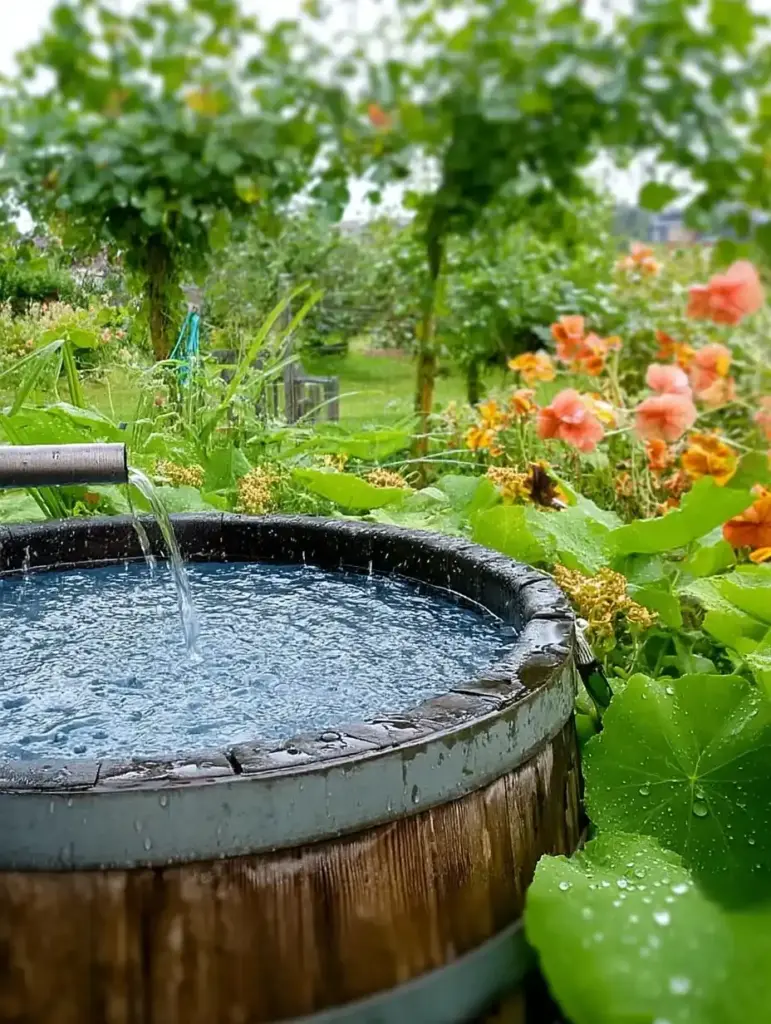
What is the main purpose of rainscaping?
Rainscaping is designed to manage rainwater runoff in a way that prevents pollution, reduces erosion, and promotes healthy soil absorption. It transforms water from a waste product into a valuable resource for your yard and the environment.
Is rainscaping expensive to install?
Costs vary depending on the size and complexity of your design. Simple projects like rain barrels or redirecting downspouts can be very affordable. More advanced features, like bioswales or large rain gardens, may require more investment but often qualify for local rebates or conservation grants.
Can I install a rainscape in a small yard?
Absolutely. Rainscaping is scalable! Even a small rain garden or permeable walkway can make a big difference. Urban homeowners can use rain barrels and native container plants to implement rainscaping techniques in compact spaces.
What plants are best for a rain garden?
Choose native plants that tolerate both wet and dry conditions. Popular options include:
- Blue flag iris
- Swamp milkweed
- Joe-Pye weed
- Black-eyed Susan
- Switchgrass
These species help filter pollutants and provide habitat for local wildlife.
Is rainscaping the same as xeriscaping?
Not exactly. While both promote water-wise landscaping, xeriscaping focuses on drought-tolerant plants and minimal irrigation, often in dry climates. Rainscaping, on the other hand, manages rainwater runoff and often includes water-holding features like rain gardens or swales.
Do I need a permit to build a rain garden or bioswale?
Regulations vary by city or county. In most residential areas, small rain gardens don’t require a permit, but larger projects involving land grading, drainage redirection, or public right-of-way areas might. Always check with your local municipality or water authority before starting a project.
Conclusion
Rainscaping is far more than just a landscaping trend—it’s a smart, sustainable, and visually appealing way to make your outdoor space part of the environmental solution. By embracing thoughtful rainscaping ideas, you can conserve rainwater, reduce runoff, and build a landscape that supports pollinators and local wildlife—without sacrificing curb appeal.
Whether you’re installing a simple DIY rain barrel system or designing a fully functional rain garden with native plants, every element of your rainscaping project makes a difference. Ready to take it a step further? Pair your efforts with walkable ground covers and eco-friendly backyard décor to create a truly regenerative yard. With each drop of rain you capture and reuse, you’re helping build a greener tomorrow—one rainscaping idea at a time.


